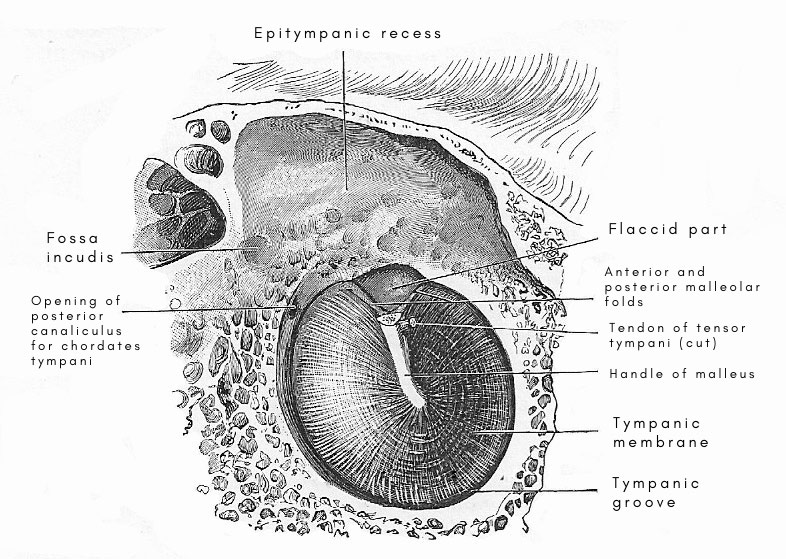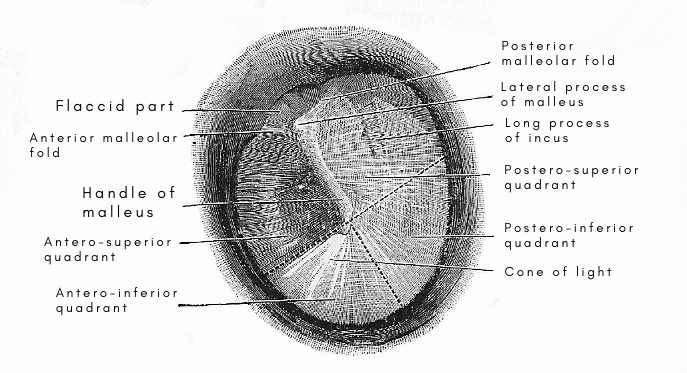tympanic membrane

Figure 1. Left tympanic membrane and epitympanic recess viewed from within. The neck and head of the malleus have been removed to show the flaccid part of the membrane.

Figure 2. Left tympanic membrane as viewed from the external meatus during an otoscopic examination. The dashed lines indicate the four quadrants into which the membrane is arbitrarily divided.
The tympanic membrane, or eardrum, is an elliptical disk stretched across the medial end of the external auditory meatus (ear canal). It forms the greater part of the lateral wall of the tympanum.
The membrane is composed of three layers: a cuticular layer laterally, a mucous layer medially, and a fibrous lamina between them. The handle of the malleus is intimately connected with the fibrous layer, and is covered medially with the mucous layer. It draws the membrane medially and is the cause of the concavity of the lateral surface.
The mode of attachment of the membrane deserves some attention. At the medial end of the meatus, a ring-like ridge of bone, very distinctly grooved, forms a frame in which the membrane is set (Figure 1). But the ridge is deficient above, and is relaced by a shallow depression called the tympanic notch. The floor of the notch attaches to the flaccid part of the membrane, which, owing to the absence of the fibrous layer, is less ense in texture than the rest of the mebrane, as well as less tense. The edge of the part of the membrane which is fixed in the tympanic groove is thickened, and at the tympanic notch the thickened part is carried down to the lateral process of the malleus, forming the anterior and posterior boundaries of the flaccid part, and raising up slight ridges of the mucous membrane called the anterior and posterior malleolar folds.
Tympanic mucous membrane
The mucous lining is thin and delicate, but the chamber is so narrow that it may be choked when the membrane swells during inflammation. The membrane lines the walls and is reflected on to the bones and tendons to clothe them. It is continuous with the lining of the pharyngo-tympanic tube and with the lining of the tympanic antrum and mastoid air-cells.


